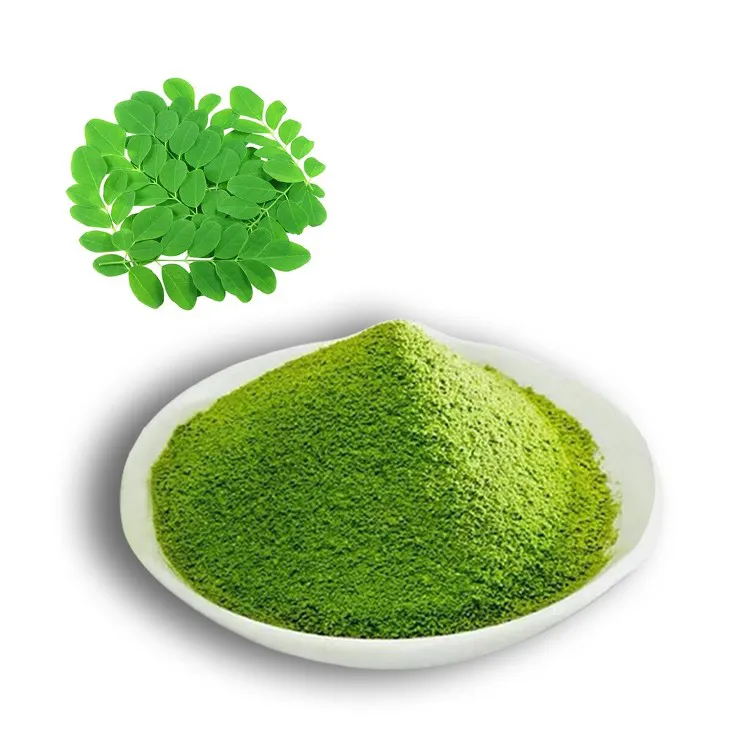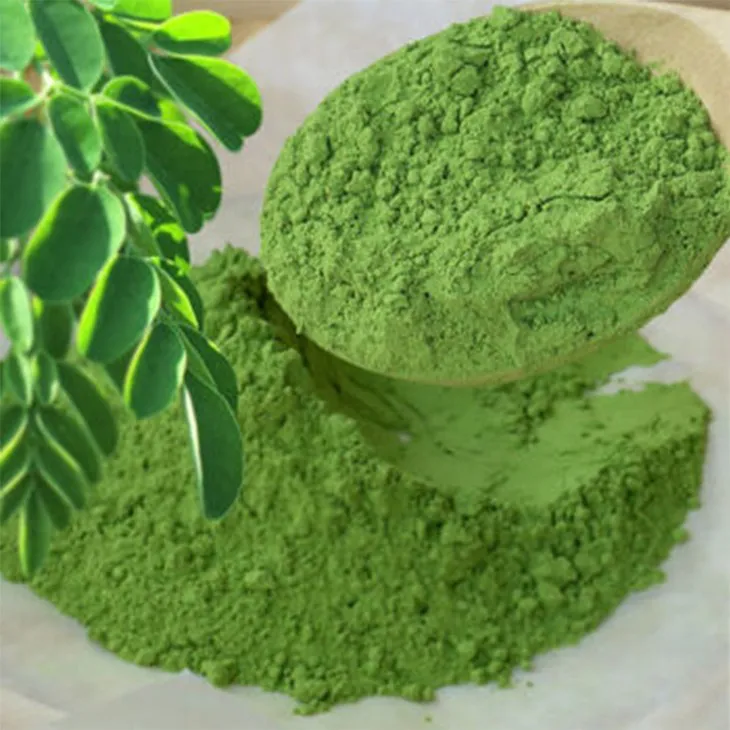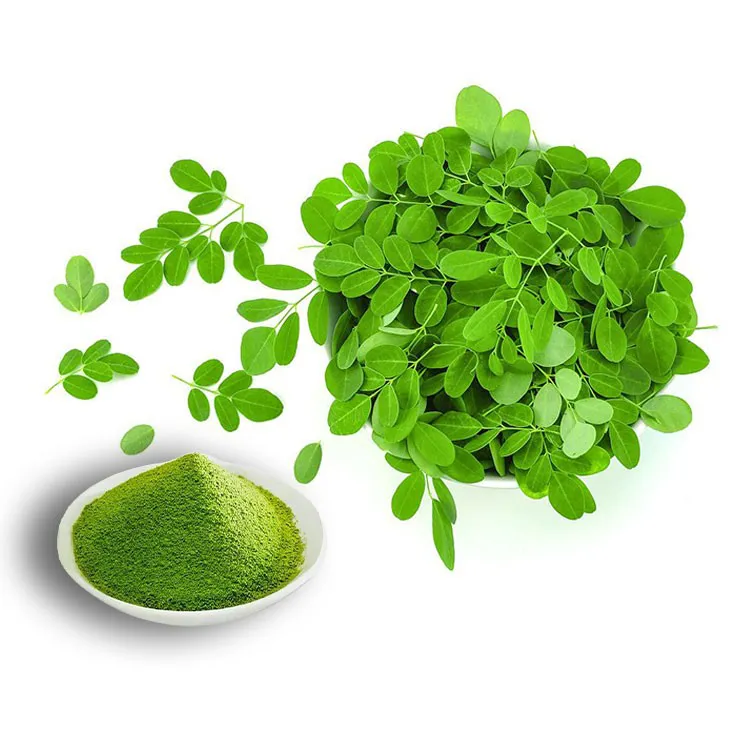- 0086-571-85302990
- sales@greenskybio.com
The extraction process of moringa powder.
2024-11-29

1. Introduction
Moringa powder has been gaining significant attention in recent years due to its rich nutritional profile. It is derived from the Moringa oleifera tree, and the extraction process plays a crucial role in obtaining a high - quality product that can be used in various industries. This article will delve into the detailed extraction process of Moringa powder.

2. Sourcing of Moringa Leaves
The first step in the extraction process of Moringa powder is the sourcing of Moringa leaves. Moringa oleifera trees are native to parts of Africa and Asia. When sourcing the leaves, several factors need to be considered.
2.1. Selecting the Right Location
Leaves from trees grown in clean and unpolluted environments are preferred. This is because moringa has the ability to absorb substances from the soil and air. If the tree is grown in an area with high levels of pollution or contaminated soil, the quality of the leaves may be compromised. For example, areas far from industrial zones and with good air quality are ideal for moringa cultivation.
2.2. Harvesting Time
The time of harvesting also affects the quality of the leaves. Moringa leaves are usually harvested when they are young and tender. Young leaves tend to have a higher concentration of nutrients compared to older ones. Typically, the best time for harvesting is in the early morning when the leaves are fresh and full of moisture.

3. Cleaning of Moringa Leaves
Once the leaves are sourced, the next step is cleaning. This is an essential step to ensure that the final moringa powder is free from contaminants.
3.1. Removal of Dirt
Dirt can accumulate on the leaves during growth and harvesting. To remove dirt, the leaves are gently washed with clean water. This can be done either by hand - washing in small - scale operations or using mechanical washing systems in larger - scale production. It is important to ensure that the water used is clean and free from any harmful substances.
3.2. Pesticide Removal (if applicable)
In some cases, moringa trees may be treated with pesticides during cultivation. If this is the case, it is crucial to remove any pesticide residues from the leaves. Specialized cleaning agents or techniques may be used to ensure that the pesticide levels are reduced to safe limits. However, organic farming methods are increasingly preferred to avoid the use of pesticides altogether.

4. Drying of Moringa Leaves
After cleaning, drying is a crucial step in the extraction process of moringa powder. The goal is to reduce the moisture level in the leaves to a very low level.
4.1. Sun Drying
Sun drying is a traditional and cost - effective method. The cleaned moringa leaves are spread out in a thin layer on clean trays or mats in a well - ventilated area exposed to the sun. However, this method has some drawbacks. For example, it is weather - dependent, and the drying process may be slow during cloudy or humid days. Also, there is a risk of contamination from dust, insects, or other environmental factors.
4.2. Mechanical Drying
Mechanical drying methods, such as using dehydrators or drying ovens, are more commonly used in commercial production. These methods can control the temperature, humidity, and air circulation more precisely. For example, the drying temperature can be set to around 40 - 60°C to ensure that the leaves are dried quickly without losing too much of their nutritional value. Mechanical drying also reduces the risk of contamination compared to sun drying.
5. Grinding of Dried Moringa Leaves
Once the moringa leaves are dried to the appropriate moisture level, the next step is grinding them into powder.
5.1. Grinding Equipment
Specialized grinding equipment is used for this process. In small - scale operations, a simple mortar and pestle can be used to grind the dried leaves into a coarse powder. However, in larger - scale commercial production, high - speed grinders or mills are employed. These machines can grind the leaves into a fine powder, which is more desirable for most applications.
5.2. Particle Size Control
The particle size of the moringa powder can affect its usability. For example, in dietary supplements, a finer powder may be more easily digestible and mixable with other ingredients. Therefore, during the grinding process, measures are taken to control the particle size. This can be achieved by adjusting the settings of the grinding equipment or by using sieves to separate the powder into different particle size fractions.
6. Testing of Moringa Powder
The extraction process also includes testing the purity and potency of the moringa powder.
6.1. Purity Testing
Purity testing is carried out to ensure that the moringa powder is free from contaminants such as heavy metals, pesticides (if any were used during cultivation), and other foreign substances. Techniques such as atomic absorption spectroscopy can be used to detect the presence of heavy metals, while chromatography methods can be employed to identify pesticide residues. If the powder fails the purity test, it may need to be further purified or discarded.
6.2. Potency Testing
Potency testing is important to determine the nutritional content of the moringa powder. This includes analyzing the levels of vitamins (such as vitamin A, C, and E), minerals (such as calcium, potassium, and iron), and other bioactive compounds (such as flavonoids and phenolic acids). High - performance liquid chromatography (HPLC) and other analytical techniques can be used to accurately measure the potency of the powder. Based on the results of the potency test, the powder can be labeled and used accordingly in different industries.
7. Applications of Moringa Powder
With its high - quality nutrients, moringa powder extracted through this process has great potential in various industries.
7.1. Dietary Supplement Industry
Moringa powder is rich in vitamins, minerals, and proteins, making it an ideal ingredient for dietary supplements. It can be used in the form of capsules, tablets, or added to protein powders and smoothies. For example, it can provide an additional source of plant - based protein for vegetarians and vegans, as well as supply essential nutrients to those with dietary deficiencies.
7.2. Pharmaceutical Industry
The bioactive compounds present in moringa powder have shown potential in the treatment of various diseases. For instance, its anti - inflammatory and antioxidant properties may be beneficial in the management of chronic diseases such as diabetes, heart disease, and arthritis. Research is ongoing to explore the full pharmaceutical potential of moringa powder.
7.3. Cosmetic Industry
Moringa powder can also be used in the cosmetic industry. Its moisturizing and nourishing properties make it suitable for use in skin care products such as creams, lotions, and masks. It can help to improve skin hydration, reduce wrinkles, and promote a healthy complexion.
8. Conclusion
The extraction process of moringa powder involves multiple steps, from sourcing the moringa leaves to testing the final product. Each step is crucial in ensuring the production of high - quality moringa powder with a wide range of applications in the dietary supplement, pharmaceutical, and cosmetic industries. As research on moringa continues, it is expected that the extraction process may be further optimized to enhance the quality and usability of moringa powder.
FAQ:
What are the main sources for Moringa powder extraction?
The main source for Moringa powder extraction is Moringa leaves.
Why is the cleaning step important in the extraction process of Moringa powder?
The cleaning step is important as it helps to remove dirt and pesticides (if present), ensuring a cleaner and purer end product of Moringa powder.
What is the significance of the drying step in the extraction of Moringa powder?
The drying step is crucial because it reduces the moisture level to a very low level. This helps in preventing spoilage and also makes the grinding process more effective in the subsequent step.
How is the purity and potency of the Moringa powder tested during the extraction process?
There are various laboratory techniques used to test the purity and potency of Moringa powder during extraction. These may include chemical analysis methods to check for the presence of specific nutrients and absence of contaminants.
What industries can benefit from the Moringa powder extracted through this process?
The Moringa powder extracted through this process has great potential in dietary supplement, pharmaceutical and cosmetic industries. In the dietary supplement industry, it can be used for its nutritional value. In the pharmaceutical industry, it may have potential medicinal properties. In the cosmetic industry, it can be used in products for skin and hair care.
Related literature
- Moringa oleifera: A Review of Its Nutritional and Medicinal Properties"
- "The Potential of Moringa oleifera in the Cosmetic Industry"
- "Moringa oleifera Leaf Powder: Production, Properties and Applications"
- ▶ Hesperidin
- ▶ citrus bioflavonoids
- ▶ plant extract
- ▶ lycopene
- ▶ Diosmin
- ▶ Grape seed extract
- ▶ Sea buckthorn Juice Powder
- ▶ Beetroot powder
- ▶ Hops Extract
- ▶ Artichoke Extract
- ▶ Reishi mushroom extract
- ▶ Astaxanthin
- ▶ Green Tea Extract
- ▶ Curcumin Extract
- ▶ Horse Chestnut Extract
- ▶ Other Problems
- ▶ Boswellia Serrata Extract
- ▶ Resveratrol Extract
- ▶ Marigold Extract
- ▶ Grape Leaf Extract
- ▶ blog3
- ▶ blog4
-
Chinese green tea extract factory.
2024-11-29
-
The Most Highly - Praised Lavender Extract.
2024-11-29
-
Organic Goldenseal Extract Powder Suppliers.
2024-11-29
-
Standard - process pine bark extract powder.
2024-11-29
-
Nature's Bounty Almond Powder
2024-11-29
-
Acerola Juice Powder
2024-11-29
-
Buckthorn bark extract
2024-11-29
-
Sophora Flavescens Root Extract
2024-11-29
-
Lemon Balm Extract
2024-11-29
-
Hedyotis Diffusa Extract
2024-11-29
-
Citrus bioflavonoids
2024-11-29
-
Black Pepper Extract
2024-11-29
-
Selenium yeast
2024-11-29
-
Beetroot juice Powder
2024-11-29
-
Konjac Powder
2024-11-29





















